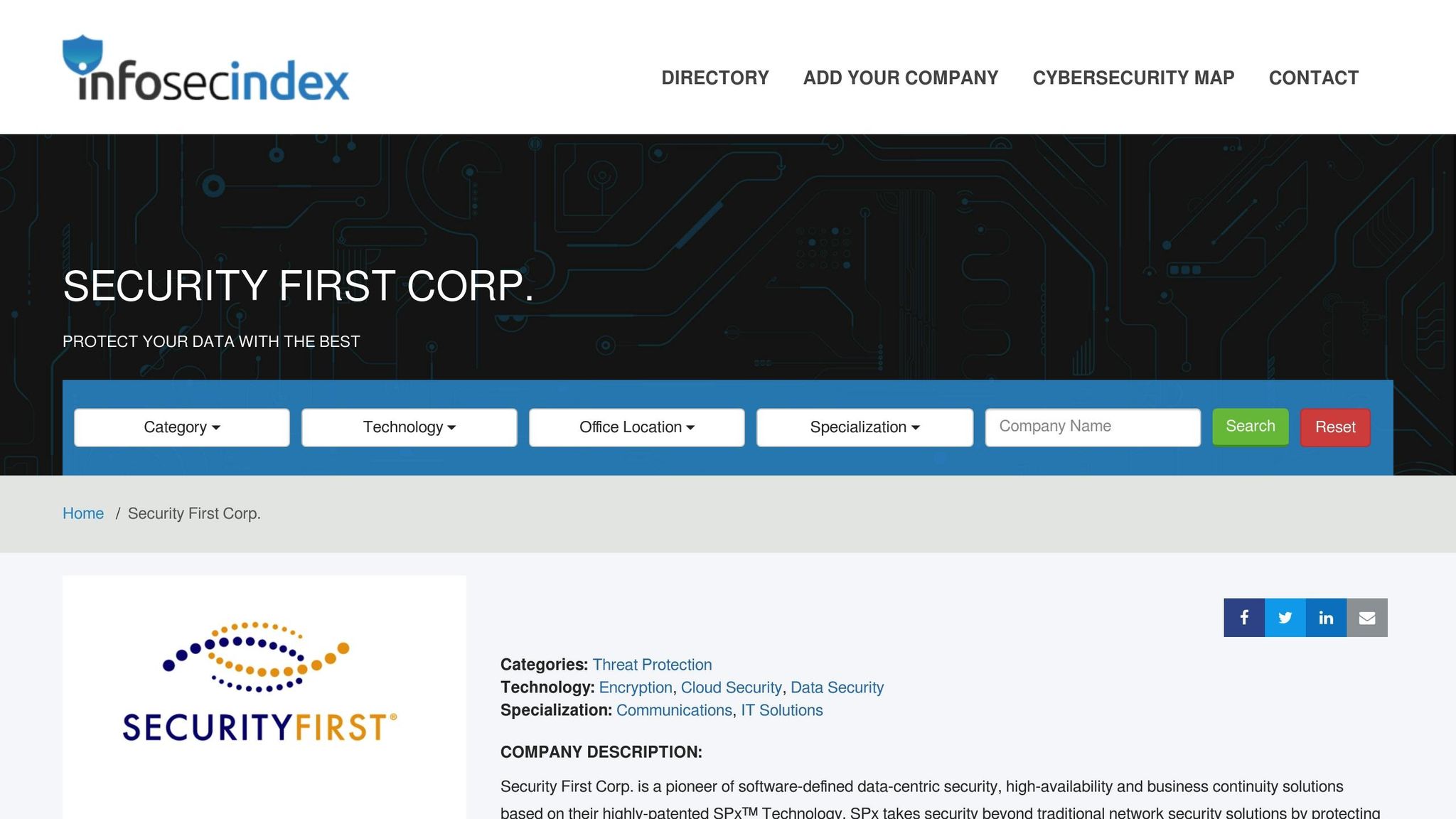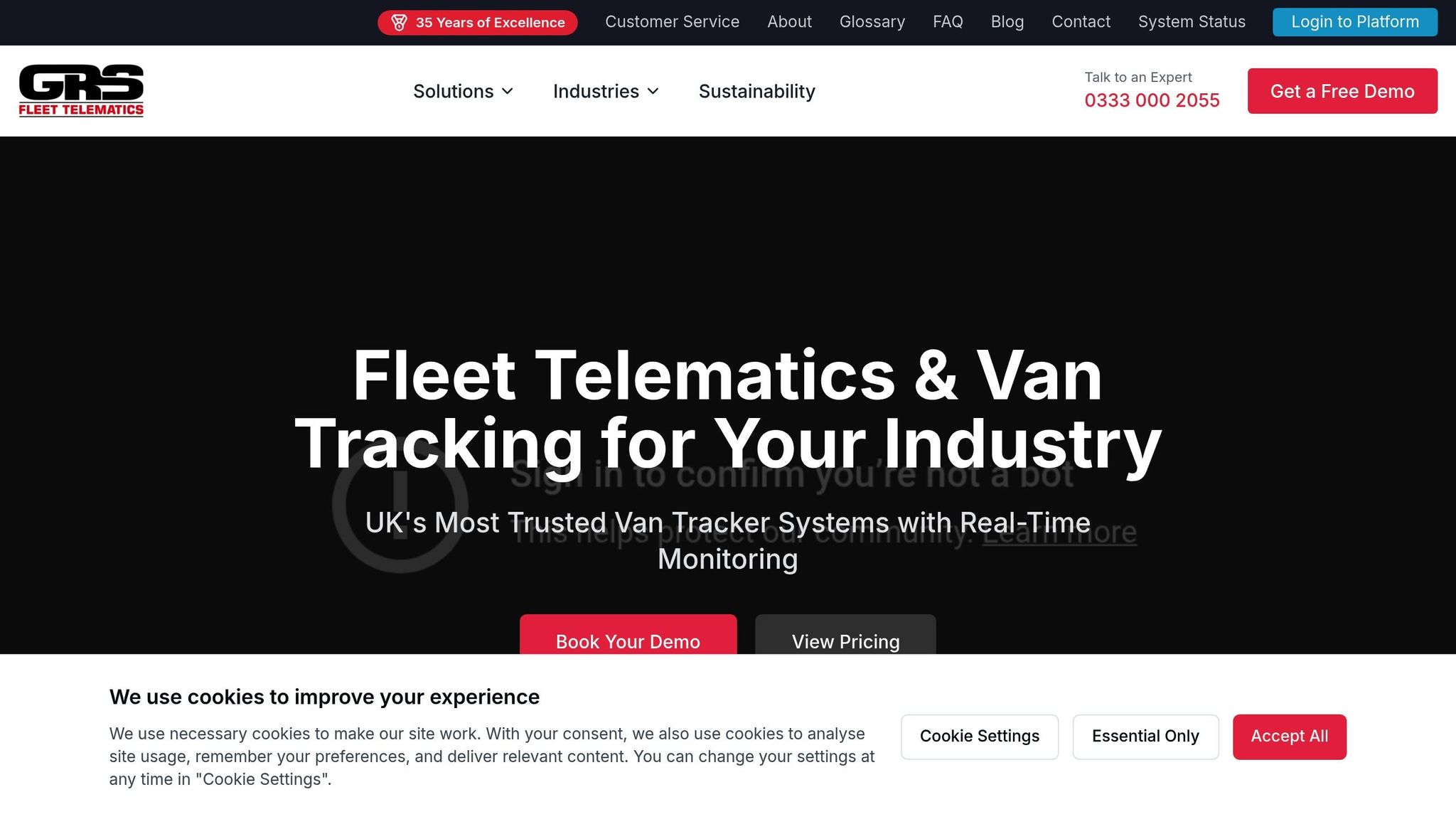What Is ELD Compliance?
Understand ELD compliance, its benefits for fleet management, and how it enhances safety and efficiency in transport operations.

ELD compliance refers to the legal requirement for using Electronic Logging Devices (ELDs) to track driving hours and ensure adherence to Hours of Service (HOS) regulations. These devices connect to a vehicle's engine to record key data like driving time, mileage, and GPS location. The aim is to prevent driver fatigue, improve road safety, and ensure accurate, tamper-proof records for both domestic and international transport operations.
In the UK, digital tachographs have been mandatory since 2006 for domestic journeys. However, fleets operating internationally must comply with ELD standards alongside tachograph rules. ELDs simplify record-keeping, reduce manual errors, and help fleet operators avoid penalties for non-compliance.
Here’s what you need to know:
- How ELDs work: They automatically track driving data, connect to fleet management systems, and ensure accurate records.
- Legal requirements: UK fleets use tachographs domestically but must meet ELD standards for international operations.
- Benefits: Simplified reporting, better safety, and real-time tracking for fleet operators and drivers.
- Penalties for non-compliance: Fines, vehicle prohibitions, and potential licence action for operators.
ELD compliance is not just about meeting regulations - it helps fleets operate more efficiently while protecting drivers from overwork.
ELD Functions and Requirements
How ELDs Work
Electronic Logging Devices (ELDs) connect directly to a vehicle's engine control module (ECM) through the diagnostic port, automatically capturing key driving data. They keep track of engine start and stop times, vehicle movement, and GPS locations in real time, ensuring accurate records of driving hours and vehicle usage.
Drivers log in using in-cab units or smart cards, linking their activities to their identity. However, they still need to manually record non-driving tasks, such as inspections, loading, or rest breaks.
The data collected is stored locally and sent in real time to fleet management systems. This ensures the information remains accurate and accessible, while also laying the groundwork for the technical standards ELDs are required to meet.
Technical Standards
ELD systems must adhere to stringent technical requirements to ensure accuracy, reliability, and protection against tampering. They connect securely to the ECM to prevent any manipulation of the data.
These devices record essential details, including vehicle identification numbers, engine hours, distance covered, and changes in duty status. To safeguard this information, ELDs use encrypted storage and secure communication channels, and they can issue alerts if interference is detected. Data can be transferred electronically or printed out for quick roadside inspections, while local storage ensures access during connectivity issues. Drivers can view their duty status and hours worked through clear displays on integrated screens or mobile apps.
This solid technical framework helps ensure compliance with legal standards, which come with additional operational responsibilities.
Legal Requirements
In the UK, domestic operations rely on digital tachographs, which require regular calibration and inspections. For international transport, fleets must comply with international ELD standards. Providers must certify that their hardware, software, and data security meet these standards.
Drivers need training on how to log in, record duty status changes, and deal with any issues that arise. Operators, meanwhile, are responsible for retaining ELD data for the required periods while ensuring driver privacy is protected throughout the process.
What Is ELD Compliance? - SecurityFirstCorp.com

How ELD Compliance Affects Fleet Management
ELD compliance has reshaped fleet operations, simplifying administrative tasks while improving safety and operational efficiency. By integrating regulatory requirements with advanced technology, it has become a game-changer for fleet management.
Benefits for Fleet Operators
For fleet operators, ELD systems bring a range of practical advantages. One standout feature is automated record-keeping. These devices automatically track driving activity, engine hours, ignition status, location, and mileage. This data seamlessly syncs with fleet management software, providing real-time insights and enabling better decision-making.
Administrative tasks become much easier with automated reporting. For instance, fuel tax calculations and mileage reports are handled automatically, saving time and reducing the chance of human error. ELDs also streamline vehicle inspections and fault reporting, allowing for proactive maintenance that keeps vehicles on the road longer.
Real-time data offers fleet managers an immediate view of driver locations and vehicle conditions. This visibility supports smarter dispatching and load management. Additionally, GPS tracking and telematics help optimise routes, cut down on idle time, and reduce fuel costs through improved planning.
Performance analytics provide deeper insights into driving habits, fuel consumption, and adherence to routes. This information can be used to develop targeted feedback programmes that improve efficiency and reduce costs. Fleet managers can also identify risky driving behaviours - like hard braking or sharp cornering - and use this data to coach drivers and reward safe practices.
While these systems simplify operations for managers, they also bring specific benefits and responsibilities for drivers.
Impact on Drivers
For drivers, ELD compliance offers both protection and accountability. Automated tracking ensures drivers adhere to legal driving limits, helping to prevent fatigue-related accidents and overwork.
Accurate time logs promote fair work practices. Drivers gain clear documentation of their working hours, rest breaks, and downtime, ensuring they are paid correctly and that employment rules are followed. Real-time updates on remaining driving hours also help drivers plan their trips and breaks more effectively. However, the increased monitoring means drivers must manage their time and driving habits carefully.
Non-Compliance Penalties
Non-compliance with ELD regulations can lead to severe consequences. In the UK, the Driver and Vehicle Standards Agency (DVSA) enforces tachograph and drivers' hours rules with significant authority to address violations.
Financial penalties vary depending on the severity of the offence. For example:
| Offence | Penalty |
|---|---|
| Failure to observe driving times, break or rest period rules | Level 4 fine |
| Failure to make or keep records under GB rules | Level 4 fine |
| Failure to install a tachograph | Level 5 fine |
| Failure to use a tachograph | Level 5 fine |
| False entry or alteration of a record with intent to deceive | On summary conviction: Level 5 fine or, on indictment, up to 2 years' imprisonment |
| Altering or forging a tachograph seal with intent to deceive | On summary conviction: Level 5 fine or, on indictment, up to 2 years' imprisonment |
Operational disruptions can also be costly. DVSA examiners may issue vehicle prohibitions, temporarily banning a vehicle from being used until compliance issues are resolved. Vehicles can even be immobilised, adding release fees to the list of expenses.
Operator liability extends to the fleet as a whole. Fleet operators may be held accountable for drivers' violations unless they can prove that they organised work properly, avoided incentivising rule breaches, provided adequate training, and conducted regular compliance checks. Poor compliance systems can lead to referrals to the Traffic Commissioner, potentially resulting in administrative action against operating licences.
The penalties for non-compliance highlight the importance of having strong systems in place. Enforcement measures range from verbal warnings for minor infractions to fixed penalties, rectification notices (with a 21-day correction period), and even prosecution for serious offences. Drivers without a UK address may face an additional financial burden, as they could be required to pay a deposit equal to the fixed penalty amount. These measures make compliance not just a legal obligation but a critical aspect of fleet management.
ELD Compliance Best Practices
Meeting ELD compliance requirements involves more than just installing the technology - it’s about creating a system that works seamlessly with your operations. Success hinges on thoughtful planning, effective implementation, and staying up to date with regulatory changes and system performance.
Choosing and Installing ELD Systems
The first step is selecting a system that meets certification standards. Always verify the device against the official DVSA or recognised UK authority list instead of relying solely on manufacturer claims. Your fleet’s size and operational needs should guide your choice. For example, owner-operators often prioritise affordability and ease of use, while larger fleets may benefit from systems offering advanced reporting and real-time tracking. If your vehicles operate in remote areas, consider systems with reliable connectivity options that don’t rely entirely on cellular networks.
Look for devices that automatically track driving time, engine hours, mileage, ignition status, and GPS data. Key features should include simple duty status selection, multiple data transfer options, and tamper-resistance. Beyond the basics, you might want features like real-time GPS tracking for route planning, automated IFTA fuel tax reporting, DVIR (Driver Vehicle Inspection Report) integration, and engine fault alerts.
Durability matters too, especially for long-haul operations. Choose devices designed to withstand extreme temperatures and constant vibrations. Decide whether a dedicated ELD device or a BYOD (Bring Your Own Device) solution is better suited to your fleet. Dedicated devices often offer greater reliability and security, while BYOD solutions may provide more flexibility and lower costs.
Data security should be a top priority. Choose providers with robust encryption and proactive monitoring to safeguard sensitive information. Reliable customer support is also essential - ideally available 24/7 - for troubleshooting and staying on top of regulatory updates.
Finally, evaluate the total cost of ownership. Consider the initial hardware cost, subscription fees, potential hidden expenses, and contract terms. Balancing these costs against the operational savings from improved compliance is crucial. Requesting a demo or trial before committing to a system can help ensure it’s the right fit.
Training Drivers and Managers
Proper training transforms ELD systems from compliance tools into valuable operational assets. Drivers need hands-on training to understand daily operations, manage duty status changes, and troubleshoot common problems like unassigned drive time or exemptions.
Managers, on the other hand, should focus on system administration, generating reports, and monitoring compliance. They need to interpret data effectively, identify potential violations, and take corrective actions when necessary. Regular refresher courses and clear reference materials can help both drivers and managers stay updated on system changes and regulatory requirements.
Highlighting the mutual benefits of compliance can boost adoption. Accurate hour tracking protects drivers from overwork, while fleet operators benefit from improved safety records and operational efficiency. This shared understanding fosters better system usage and compliance.
Maintaining Compliance
Compliance doesn’t stop after installation - it’s an ongoing effort. Regular audits and system maintenance are vital. Periodically review driver logs to ensure they’re accurate and consistent, confirming that duty status entries match actual activities. Check devices regularly for error messages or connectivity issues that could disrupt data recording. Monthly reviews can help identify and address small issues before they become major problems.
Keep your system updated. Software updates should address bugs and align with regulatory changes. Schedule these updates during quieter periods and thoroughly test the system afterward.
Staying informed about regulatory changes is equally important. Subscribe to industry news, attend training sessions, and consult regulatory experts to ensure your practices remain compliant. Document any exemptions, special circumstances, or system malfunctions to provide a clear record during inspections or audits.
Routine system checks are also essential. Test features like data transfer, GPS accuracy, and alert systems to ensure everything is functioning as it should. Regularly gather feedback from drivers to uncover and address issues early, preventing small problems from escalating into compliance gaps. These efforts not only support compliance but also enhance the safety and efficiency of your fleet operations.
How GRS Fleet Telematics Supports Compliance

With over 30 years of experience, GRS Fleet Telematics makes navigating ELD compliance and improving fleet operations in the UK much easier. Their solutions are designed to tackle the key challenges fleet operators face when implementing and maintaining ELD systems. Let’s explore how their advanced tracking tools and integrated route management help ensure compliance.
GRS Fleet Management Solutions
GRS Fleet Telematics employs dual-tracker technology to provide reliable security and compliance monitoring. If the primary tracking system encounters connectivity issues, the backup tracker ensures that data recording continues seamlessly. This approach eliminates one of the biggest headaches for fleet operators - data gaps caused by system downtime, which can lead to incomplete records during inspections.
Their real-time tracking goes beyond just pinpointing vehicle locations. It monitors speed, geofencing breaches, and eco-driving behaviours, while sending alerts to managers when drivers approach their limits. By combining GPS tracking with route and fuel management, the system ensures that drivers stick to legal schedules while also optimising routes.
For added control, the platform includes an immobilisation feature, allowing managers to remotely disable vehicles if drivers exceed their limits. This feature is especially useful for larger fleets, where monitoring individual drivers can be more difficult. It ensures that regulatory limits are upheld, even in urgent situations.
To top it off, their 24/7 recovery support minimises disruptions. If technical issues occur, immediate assistance restores functionality quickly, preventing gaps in compliance records that might attract regulatory scrutiny.
Affordable and Scalable Options
GRS Fleet Telematics combines its technical capabilities with pricing options designed to suit fleets of all sizes. Smaller fleets, often deterred by the high costs of ELD solutions, can benefit from flexible pricing starting at just £7.99 per vehicle per month. This includes SIM card costs, data usage, and professional installation.
Their three-tier hardware system offers tailored options:
- The Essential package (£35) provides basic real-time tracking, ideal for fleets needing straightforward ELD compliance.
- The Enhanced package (£79) includes dual-tracker redundancy for uninterrupted data recording.
- The Ultimate package (£99) adds immobilisation capabilities, offering the highest level of compliance control.
Operators can further cut costs with free installation, available when paired with fleet branding through GRS Fleet Graphics. This bundled deal allows smaller operators to access professional installation without extra charges, ensuring systems are set up correctly right from the start.
Another budget-friendly feature is the pay-per-recovery model, which eliminates hefty annual recovery fees. Operators only pay for recovery services if and when they’re needed, making advanced security features more accessible.
For larger fleets, white-label branding options enable companies to maintain their corporate identity while benefiting from GRS technology. This ensures a consistent brand image for clients without compromising on compliance monitoring.
The system’s scalable design is ideal for growing fleets. Operators can start with basic compliance features and expand as needed, without additional setup fees. Adding vehicles or upgrading to a higher hardware tier is straightforward, allowing fleets to grow without wasting their initial investment.
GRS Fleet Telematics also provides dedicated account managers who work closely with operators to customise system configurations. Instead of generic setups, these tailored solutions consider operational patterns, typical routes, and specific regulatory requirements to ensure compliance from the outset.
Conclusion
To wrap things up, ELD compliance plays a key role in making fleet operations across the UK safer and more efficient. By ensuring accurate record-keeping, monitoring driver safety, and promoting operational transparency, it sets a strong foundation for better fleet management.
But it doesn’t stop at compliance. ELD technology brings practical benefits too. For example, UK fleets can save up to 15% on fuel costs through smarter routing. It also boosts driver safety, reduces admin workloads, and offers complete fleet visibility - all crucial for running a modern fleet effectively.
For drivers, ELD systems simplify their day-to-day tasks by eliminating paperwork and ensuring they adhere to legal working hours. This not only shields them from fines but also contributes to safer roads. It’s this balance of protecting drivers while improving operational efficiency that makes ELDs essential.
GRS Fleet Telematics takes things a step further by combining compliance with cutting-edge operations. Their dual-tracker technology ensures uninterrupted data recording, while real-time monitoring helps fleets avoid violations. Starting at just £7.99 per month and boasting a 91% recovery rate, they make advanced fleet management affordable and effective.
Additional features like vehicle immobilisation and 24/7 recovery support offer an extra layer of security, keeping vehicles safe and systems running smoothly - even during inspections.
FAQs
What’s the difference between ELDs and digital tachographs, and when are they used?
ELDs (Electronic Logging Devices) and digital tachographs both serve the purpose of tracking drivers' hours and ensuring adherence to driving time regulations, but they cater to different regions and regulatory systems.
In the US and Canada, ELDs are the go-to solution. These devices directly connect to vehicle systems, logging data electronically to ensure compliance with domestic laws governing driving hours.
In contrast, the UK and Europe rely on digital tachographs, especially for vehicles over 3.5 tonnes that were registered after May 2006. These devices use smart cards and internal memory to record key data such as driver activity, speed, and distance travelled. They play a critical role in meeting EU and UK regulations, particularly for international transport. While ELDs aren't widely adopted in the UK, digital tachographs remain a cornerstone for fleet operators to stay compliant with legal requirements.
What are the essential technical features of an ELD system to remain compliant?
An ELD system has to meet strict technical requirements to ensure it aligns with regulations. One crucial feature is engine synchronisation, which enables the device to automatically log driving time by directly connecting to the vehicle's engine. Another essential aspect is precise location tracking, alongside being tamper-resistant to stop any unauthorised alterations to the recorded data.
On top of that, the device must adhere to legal standards, including the ability to accurately track hours of service (HOS) and comply with all relevant regulatory requirements. These features work together to provide dependable and secure data logging, helping both drivers and fleet operators maintain legal compliance.
How can fleet operators train drivers and managers to make the most of ELD compliance?
To maximise the benefits of ELD compliance, fleet operators in the UK should prioritise comprehensive training for both drivers and managers. This training should include detailed instructions on using ELD devices, understanding relevant legal requirements, and keeping accurate records. Clear and consistent guidance helps ensure everyone is aware of their duties, reducing the chances of compliance problems.
Regular refresher courses and hands-on demonstrations play an important role in reinforcing this knowledge and boosting confidence. By committing to continuous training, operators can enhance safety, minimise violations, and improve the overall efficiency of their fleet.
